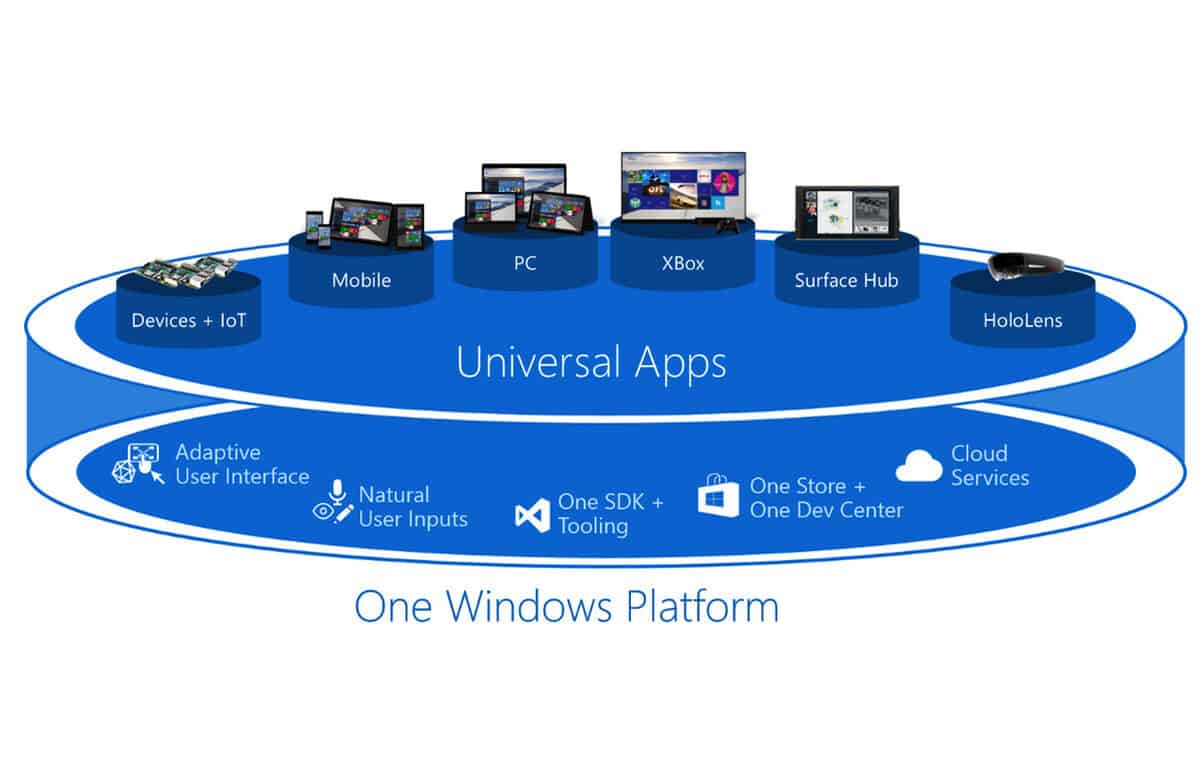As Microsoft is currently holding its annual Build developer conference in Seattle this week, it seems that rumors about the death of universal Windows 10 apps (UWP) have been greatly exaggerated. There are actually several sessions dedicated to UWP apps on the Build 2019 session catalog, including one this morning titled “Building UWP apps for Multiple Devices”.
There are other sessions dedicated to using Visual Studio Libraries for UWP and desktop apps, using .NET Core with UWP, or allowing Win32 apps to access Windows APIs for packaged applications. What is currently happening these days is that Microsoft is doing some important platform changes so that developers will no longer have to choose between legacy desktop apps and UWP apps. As developers have been slow to embrace universal apps on Windows 10, Microsoft is now making it possible for legacy Win32 apps to leverage UWP features.
In an interview with ZDNet, Kevin Gallo, Corporate Vice President of the Windows Developer Platform, explained that ending the “massive divide” between Win32 apps and UWP apps is still very much a work in progress. “By the time we are done, everything will just be called ‘Windows apps,’” explained Gallo, adding that the company’s end goal is to make “every platform feature available to every developer.”
This echoes what Gallo wrote on the Windows Developer blog earlier this week. “You’ve told us that you would like us to continue to decouple many parts of the Universal Windows Platform so that you can adopt them incrementally such as WinUI, MSIX, and Windows Terminal,” explained Gallo. Now, Windows frameworks like Win32 and Windows Presentation Foundation (WPF) have all been “elevated to full status,” Gallo told ZDNet, meaning that non-UWP apps will be able to leverage more and more UWP features.
As for the Microsoft Store, it has become mostly an apps, games and movies store after Microsoft dropped the Music and ebooks categories. After opening its Store to bridged desktop apps in recent the years, Microsoft managed to get some big names on board including iTunes and Spotify, but the company is still facing the same struggles as Apple does with its own Mac App Store that launched a couple years before the Microsoft Store.
“The Store is about commerce. It’s another channel for distribution,” said Gallo, confirming that the Microsoft Store was here to stay. However, Microsoft is well aware that on open platforms like Windows, users will often prefer to get apps elsewhere. “They don’t need to be in the Store. People really just want to know if Microsoft considers an app good,” added Gallo.
As of today, UWP apps still makes sense for developers looking to build apps that can run on Windows 10 PCs, Xbox One consoles, or Windows Mixed Reality devices, but Microsoft will now help developers make their legacy desktop apps behave like UWP apps. Whether these modern desktop apps end up in the Microsoft Store a totally different question, but Microsoft will continue to do the platform work to allow developers to easily distribute and monetize their apps on Windows 10.



